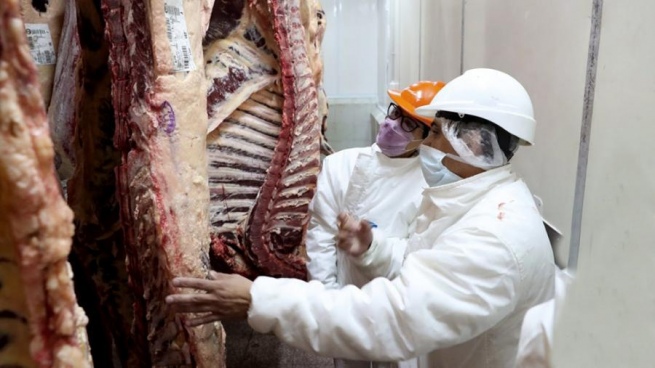The impact of the drought on increased cattle slaughtering, the sustained drop in meat consumption and less pressure from international corn prices favored in recent months a stabilization process in the price of beefaccording to a report prepared by the Center for Argentine Political Economy (CEPA).
If the evolution of average beef prices in the last four months is analyzed, the average increase in cuts was 1.4% in June, 0.0% in July, 1.2% in August and 1.8% in September.
While the increase in food prices measured by the Indec was much higher in that period: 4.6% in June, 6.0% in July, 7.1% in August and 6.0% in September (estimated) .
“The evolution of the price of beef is explained, to a large extent, by due to the drought effect (which improves supply), the drop in consumption and the international situation (where falling prices obviously influence the local market)”noted the CEPA report.
To this are added “the evolution of the price of corn (which, although it increased, only closed the gap with the farm price) and an international scenario that exhibits falling food price levels (along with a decreasing demand for exports), so the “contagion” effect on non-exportable categories results in insignificant price movements”.
The meat remained with stable values in the last monthhttps://t.co/pHoyOO3RUC
—Telam Agency (@TelamAgency) August 17, 2022
Regarding the level of beef consumption, the annual livestock monitor of the Rosario Stock Exchange shows that per capita consumption of beef continues to pierce the historical levelstanding in September at 46.7 Kg/inhabitant/year.
It should be added that in recent months the supply at slaughter has increased (+8.5% in August compared to the same month of 2021) and, so far this year, the accumulated growth is 4.4%, totaling 2,044. 653 tons, 85,500 tons of meat more than those produced a year ago, something that could be explained by the effect of the drought.
“However, November and December are months where consumption tends to increase, they again showed significant increases in the price of meat, averaging 11% and 10% respectively,” warned the work of the CEPA Price Observatory.
Looking ahead to the coming months, the report pointed out that it is necessary to “closely monitor” the evolution of Chinese demand for a possible consumption in that country and the price of corn, since “the lower amount of corn offered towards the end of year tends to generate upward pressure on meat prices”.
The meat category represents a large part of the consumption of Argentines, given that its consumption represents, in the conformation of the consumer price index (CPI), between 7% (GBA) and 13.3% (northeast) of the total.


















